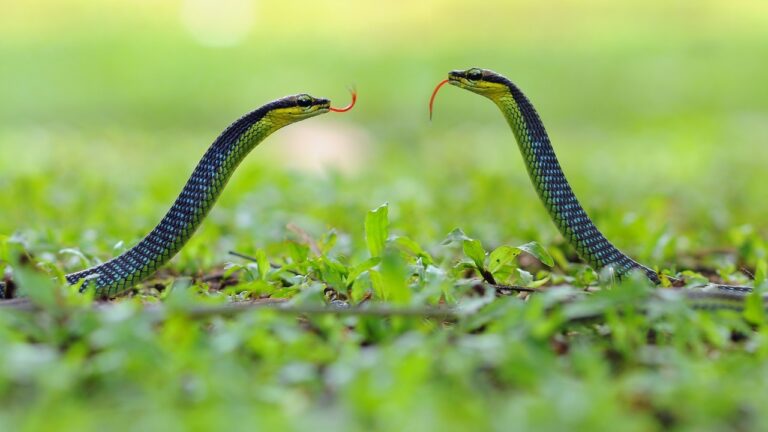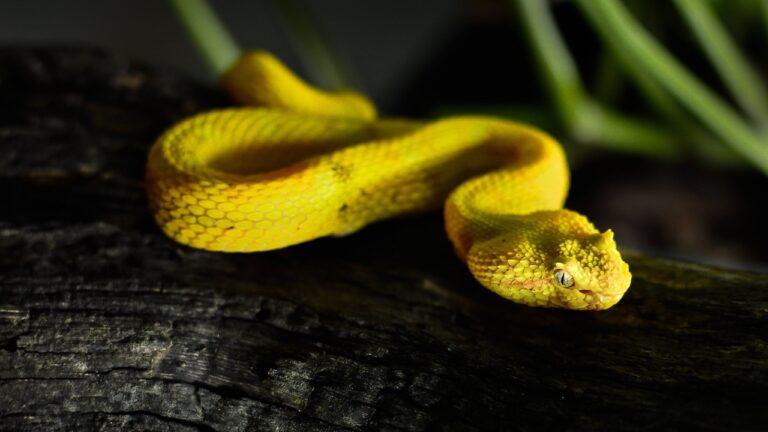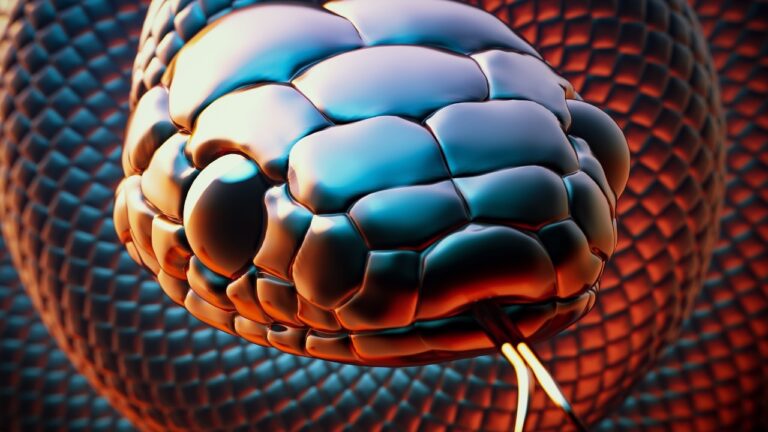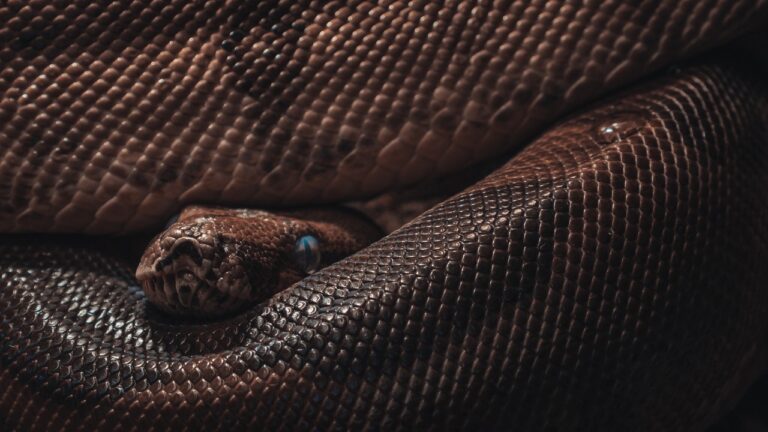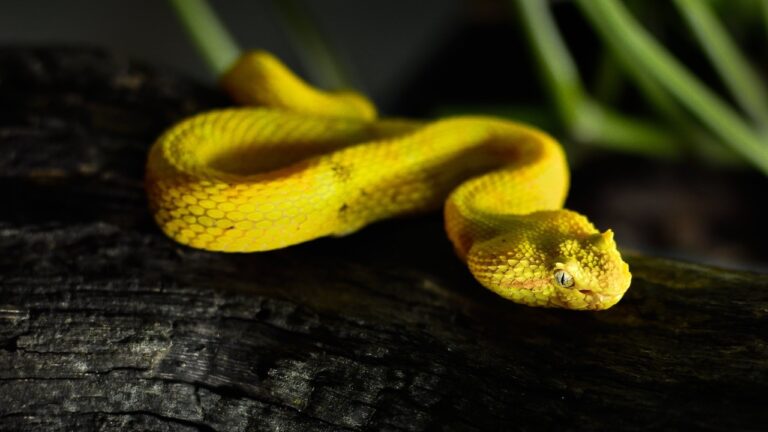Snake Feeding Problems: A Guide to Optimal Nutrition for Your Reptile
Importance of proper nutrition for snakes
Snakes, with their sleek bodies and mesmerizing movements, have captivated humans for centuries. Whether you’re a seasoned reptile enthusiast or a new snake owner, ensuring your scaly companion receives proper nutrition is crucial for their overall health and well-being.
Proper nutrition is the cornerstone of a snake’s physical and mental development. It provides the essential nutrients, vitamins, and minerals necessary for their growth, immune function, and reproductive success. Just like any other animal, snakes require a balanced diet to thrive.
A snake’s diet plays a vital role in maintaining its overall health and preventing common health problems. Inadequate nutrition can lead to a host of issues, including refusal to eat, malnutrition, and even obesity. These problems can have severe consequences, impacting the snake’s lifespan and quality of life.
Understanding the unique nutritional requirements of snakes is key to providing them with the optimal diet. By replicating their natural feeding habits and offering a variety of appropriate prey, you can ensure your snake receives the nutrients it needs to flourish.
In this comprehensive guide, we will delve into the world of snake nutrition, exploring their natural diet, nutritional requirements, and common feeding problems. We will also provide you with valuable tips and strategies to optimize your snake’s nutrition. So, let’s embark on this journey and unravel the secrets to a well-fed and thriving snake!
Continue reading: Snake Feeding Problems: A Guide to Optimal Nutrition for Your Reptile
Common Snake Feeding Problems
Ensuring proper nutrition for your beloved reptile is essential for their overall health and well-being. However, like any pet, snakes can experience various feeding problems that may impact their nutritional intake. In this section, we will discuss some of the common snake feeding problems that snake owners may encounter and provide insights on how to address them effectively.
Refusal to Eat
One of the most frustrating issues snake owners may face is when their reptile refuses to eat. This behavior can be concerning, as it may indicate an underlying health issue or stress. To tackle this problem, it is crucial to understand the potential causes behind a snake’s refusal to eat.
There are several factors that can contribute to a snake’s refusal to eat, including improper husbandry conditions, stress, illness, or simply being in a fasting period due to natural seasonal changes. It is important to rule out any health concerns by observing your snake’s behavior and consulting with a veterinarian if necessary.
Inadequate Diet
Another common feeding problem in snakes is an inadequate diet. Snakes, being carnivorous creatures, require a diet that closely mimics their natural feeding habits. A well-balanced diet is crucial to meet their nutritional needs and promote optimal health.
An inadequate diet can lead to various health issues such as vitamin deficiencies, reduced immunity, and poor growth. Snakes need a diet rich in protein, with a variety of prey items that include appropriately sized rodents, birds, or amphibians. It is important to research and understand the natural feeding habits of your specific snake species to ensure you are providing the right diet.
Obesity
While obesity may not be the first thing that comes to mind when thinking about snake feeding problems, it can indeed occur. Obesity in snakes is often the result of overfeeding or offering prey items that are too large. This can negatively impact a snake’s health and lead to a host of issues, including reduced mobility, respiratory problems, and an increased risk of other diseases.
To prevent obesity in snakes, it is crucial to establish a proper feeding routine and ensure that prey items are of an appropriate size. Monitoring your snake’s body condition regularly and adjusting their diet accordingly is key to maintaining a healthy weight.
Malnutrition
Malnutrition is a serious concern for snakes and can occur when they are not receiving the necessary nutrients from their diet. This can lead to a range of health problems, including stunted growth, weakened immune system, and organ dysfunction. Malnutrition can be caused by an imbalanced diet that lacks essential vitamins, minerals, and other nutrients.
To address malnutrition, snake owners should focus on providing a varied and nutritionally balanced diet. This includes offering a variety of prey items to ensure that all nutritional requirements are met. Additionally, supplementation with vitamins and minerals may be necessary, especially for captive snakes that may not have access to a diverse range of prey items.
Understanding and addressing common snake feeding problems is crucial to ensure the well-being of your reptilian companion. By being aware of these challenges and taking appropriate measures, you can help your snake thrive and lead a healthy life.
To learn more about snake feeding, check out our snake feeding guide for valuable insights and tips on creating an optimal feeding routine for your scaly friend.
Understanding Snake Nutrition
Snakes are fascinating creatures that require specific nutrition to thrive in captivity. Understanding their natural diet and nutritional requirements is essential for providing them with optimal care. By delving into the world of snake nutrition, you can ensure that your slithering companion receives a well-balanced diet that promotes good health and longevity.
Natural Diet of Snakes
To comprehend snake nutrition, it is crucial to explore their natural diet in the wild. Snakes are carnivorous reptiles, meaning they primarily consume other animals. However, the specific prey items and feeding habits vary among snake species. Some snakes feed on rodents, while others prefer birds, amphibians, or even other reptiles.
It is important to note that certain snake species are specialized predators, with unique feeding habits. For instance, constrictor snakes employ their powerful bodies to wrap around and suffocate their prey, while venomous snakes inject toxic venom to immobilize their victims. These adaptations showcase the incredible diversity of snake feeding behavior.
Nutritional Requirements
Just like any other animal, snakes have specific nutritional requirements to support their growth and overall well-being. The exact nutritional needs vary depending on the species, age, size, and activity level of the snake. However, there are some common nutritional elements that all snakes require.
Protein is a crucial component of a snake’s diet. It provides the essential amino acids necessary for various physiological processes, including muscle development and tissue repair. Snakes also require a balance of vitamins and minerals to maintain proper bodily functions. Calcium, for instance, is vital for bone health, while vitamin D facilitates calcium absorption.
Understanding the nutritional requirements of your snake is paramount to ensuring its health. Consult reputable resources, such as snake feeding charts or snake feeding guides, to gain insights into the specific needs of your snake species. Proper knowledge and attention to detail will enable you to create a snake feeding plan that meets the unique dietary needs of your scaly friend.
In the next section, we will discuss valuable tips for achieving optimal snake nutrition. From offering a variety of prey to determining the appropriate feeding frequency, these guidelines will help you navigate the intricacies of snake feeding and promote a healthy, thriving snake. So, let’s dive into the world of snake feeding habits and discover the secrets to a well-fed reptile companion.
Tips for Optimal Snake Nutrition
Proper nutrition is essential for the health and well-being of your snake. To ensure that your reptile is getting the nutrients it needs, here are some tips for optimal snake nutrition:
Offer a Variety of Prey
Snakes have diverse feeding habits, with different species preferring different types of prey. To provide a balanced diet, it’s important to offer a variety of prey options. This will mimic the snake’s natural diet and provide a range of nutrients. For example, if you have a corn snake, you can offer it a mix of mice, rats, and even small birds. Similarly, if you have a ball python, you can vary its diet by offering it mice, rats, and occasionally chicks.
Proper Prey Size
When it comes to feeding your snake, size matters. It’s crucial to offer prey that is appropriately sized for your reptile. A prey item that is too small won’t provide sufficient nutrition, while one that is too large can be difficult for the snake to swallow and digest. As a general rule, the prey should be about the same width as the snake’s widest part of the body. This ensures that it can consume the prey comfortably and digest it properly.
Feeding Frequency
The frequency of feeding depends on the age, species, and size of your snake. Young snakes generally require more frequent meals compared to adult snakes. For instance, a baby corn snake may need to be fed every 4-5 days, while an adult boa constrictor may only require a meal once every 2-3 weeks. It’s important to research the specific needs of your snake species and create a feeding schedule that suits its requirements. To assist you in determining the right feeding frequency for your snake, you can refer to our snake feeding chart.
Supplementation
While snakes primarily obtain their nutrition from the prey they consume, it’s important to provide them with additional supplementation to ensure they receive all the necessary vitamins and minerals. This is especially important for captive snakes whose diet may not be as varied as their wild counterparts. Reptile-specific vitamin and mineral supplements can be sprinkled on the prey before feeding, or you can choose to feed your snake prey that has been gut-loaded with nutrient-rich foods.
By following these tips for optimal snake nutrition, you can ensure that your reptile receives a well-rounded and balanced diet. Remember, a healthy diet is the foundation for a healthy snake. For more in-depth information on snake feeding, you can refer to our comprehensive snake feeding guide.
Now that we’ve covered the key elements of snake nutrition, let’s explore some common problems that snake owners may encounter when it comes to feeding their slithering companions.
Troubleshooting Snake Feeding Problems
Snakes, like any other animals, can sometimes experience feeding problems. Whether it’s a refusal to eat, an inadequate diet, or issues with obesity or malnutrition, these problems can be concerning for snake owners. In this section, we will explore how to identify and troubleshoot these common feeding problems, and when it may be necessary to seek veterinary advice.
Identifying the Issue
When faced with a snake that is not eating, it’s crucial to identify the underlying issue. A variety of factors can contribute to a snake’s refusal to eat, so it’s essential to investigate and rule out potential causes. One common reason for a snake’s refusal to eat is stress, which can be caused by changes in the environment, handling, or even illness. Another possible cause could be improper husbandry, such as incorrect temperature or humidity levels in the snake’s enclosure.
To determine the cause of the feeding problem, it’s important to observe your snake closely. Look for any changes in behavior or appearance, such as lethargy, weight loss, or abnormal shedding. Examine the snake’s enclosure and ensure that it provides a suitable environment, including appropriate hiding spots and proper temperature gradients. Additionally, consider any recent changes in the snake’s routine or surroundings that could be causing stress.
Adjusting Feeding Techniques
Once you have identified the issue, it’s time to adjust your feeding techniques accordingly. For snakes that refuse to eat, try offering different types of prey. Snakes can be picky eaters, and a change in prey item might entice them to eat. Additionally, consider offering live prey versus pre-killed or frozen-thawed prey. Some snakes prefer the movement and scent of live prey, but it’s important to supervise the feeding process to prevent injury to the snake.
Another important aspect to consider is the size of the prey. Offering prey that is too large or too small can discourage a snake from eating. Refer to a snake feeding chart or guide to determine the appropriate prey size for your specific snake species and age. Remember that proper prey size is crucial for the snake’s digestion and overall health.
Seeking Veterinary Advice
In some cases, despite your best efforts, a snake may continue to have feeding problems. If your snake has been refusing to eat for an extended period, has significant weight loss, or shows other signs of illness, it is advisable to seek veterinary advice. A reptile veterinarian can perform a thorough examination and provide guidance specific to your snake’s needs. They may recommend diagnostic tests, such as bloodwork or fecal analysis, to identify any underlying health issues.
Remember, a veterinarian with experience in reptile medicine will be best equipped to diagnose and treat your snake’s feeding problems. They can offer valuable insights and help create a customized feeding plan that addresses your snake’s nutritional needs and health concerns.
In conclusion, troubleshooting snake feeding problems requires careful observation, adjustment of feeding techniques, and, when necessary, seeking veterinary advice. By identifying the underlying issue and implementing appropriate changes, you can help your snake maintain optimal nutrition and overall well-being.
For more information on snake feeding and care, check out our snake feeding tips and snake feeding schedules for a comprehensive guide.
Conclusion
In conclusion, providing optimal nutrition for your snake is crucial for their overall health and well-being. By understanding the common feeding problems that snakes may face and taking the necessary steps to address them, you can ensure that your reptile companion receives the proper nutrients they need to thrive.
Refusal to eat is a common issue among snakes, and it is important to identify the root cause of this behavior. Whether it’s due to stress, improper husbandry, or a medical condition, addressing the underlying problem is key. Additionally, providing a varied diet that mimics their natural feeding habits can help entice a picky eater.
Inadequate diet, obesity, and malnutrition are other feeding problems that can arise if proper nutrition is not maintained. Understanding the natural diet of snakes and their specific nutritional requirements is essential for meeting their dietary needs. Offering a variety of prey items in the correct size and frequency, along with appropriate supplementation, can help prevent these issues.
If you encounter any feeding problems with your snake, it is important to troubleshoot the issue. Identifying the problem, adjusting your feeding techniques, and seeking veterinary advice when necessary are all important steps in resolving feeding issues and ensuring the health of your snake.
Remember, maintaining a balanced and nutritious diet for your snake is a continuous process. Regular monitoring of their feeding behavior and making necessary adjustments to their feeding routine will help prevent future problems. By following the tips and guidelines outlined in this article, you can provide your snake with the best possible nutrition for a long and healthy life.
For more detailed information on snake feeding, be sure to check out our snake feeding guide and snake feeding tips. You can also refer to our snake feeding chart for a convenient reference to help you plan your snake’s feeding schedule.
Remember, a well-fed and nourished snake is a happy and thriving snake. So, take the time to understand their feeding habits, avoid common feeding mistakes, and provide them with the nutrition they need to flourish. Your snake will thank you with their vibrant health and vitality.


